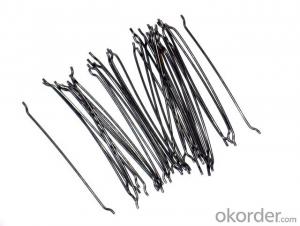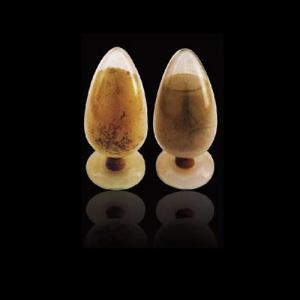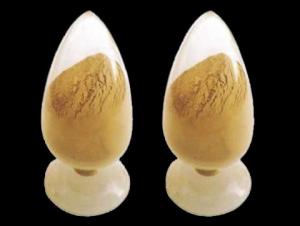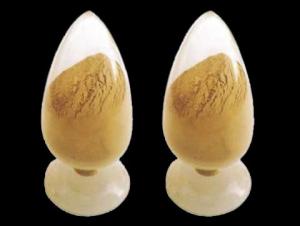Castable for Iron and Steel
- Loading Port:
- China Main Port
- Payment Terms:
- TT OR LC
- Min Order Qty:
- -
- Supply Capability:
- -
OKorder Service Pledge
OKorder Financial Service
You Might Also Like
General Information
CMAX Monolithic Refractories for Blast Furnace including Al2O3- SiO2-C castable for blast furnace tapping channel, alumina-spinel castable for ladle and high-alumina plastic castable. Made as per international standards, our product is known for its excellent corrosion and scouring resistance of iron steel, long operating life and easy execution and mending. Further, these can be provided in different specifications as required by the clients.
Feature
Excellent corrosion and scouring resistance of iron steel
Long operating life
Easy execution and mending
Application
Main ditch of molten iron line
Main ditch of slag line
Iron trough
Slag trough
Linings of ladle (Vibration casting method construction
Linings of heating furnace of steel rolling, incinerator (Ramming construction method)
- Q:What are the main challenges in designing the lining system with monolithic refractories?
- The main challenges in designing the lining system with monolithic refractories include ensuring proper installation and curing, achieving adequate strength and durability, managing thermal expansion and contraction, controlling shrinkage and cracking, and maintaining chemical resistance against corrosive environments. Additionally, the selection of suitable raw materials, proper mixing techniques, and effective installation methods are crucial to overcome these challenges and ensure a successful lining system design.
- Q:How do monolithic refractories resist abrasion in the iron and steel industry?
- Monolithic refractories are specifically designed to resist abrasion in the iron and steel industry due to their unique composition and properties. These refractories are made from a single homogeneous material, which allows them to exhibit exceptional strength and durability when subjected to continuous abrasion. One of the key factors that contribute to the abrasion resistance of monolithic refractories is their high density. These refractories are manufactured with tightly packed particles, ensuring a solid and compact structure. This density helps to minimize wear and tear caused by the constant movement of materials, such as iron and steel, within the industry. Additionally, monolithic refractories often contain high levels of alumina, which is known for its excellent abrasion resistance. Alumina is a highly refractory material that can withstand high temperatures and mechanical stress without deteriorating. Its presence in monolithic refractories provides a protective layer that resists abrasion caused by the movement and impact of iron and steel particles. Moreover, monolithic refractories can be designed with specific additives and binders that further enhance their resistance to abrasion. These additives can include silicon carbide, mullite, or zirconia, which are known for their superior mechanical strength and ability to withstand wear. The binders used in the manufacturing process also contribute to the refractory's integrity and ability to withstand abrasion by providing a cohesive structure. Overall, the combination of high density, alumina content, specialized additives, and binders makes monolithic refractories highly resistant to abrasion in the iron and steel industry. These refractories are capable of withstanding the harsh conditions and constant movement of materials, ensuring longevity and efficiency in various applications within the industry.
- Q:What are the key properties of monolithic refractories?
- Monolithic refractories are a type of refractory material that are unshaped or shapeless, meaning they do not have a definite form like bricks or tiles. Instead, they are typically composed of a mixture of aggregates, binders, and additives that can be easily molded and installed in various industrial applications. The key properties of monolithic refractories are: 1. High temperature resistance: Monolithic refractories are designed to withstand extremely high temperatures, making them suitable for applications in industries such as steel, cement, glass, and petrochemicals. They can maintain their strength and structural integrity even at temperatures exceeding 3000 degrees Fahrenheit. 2. Thermal shock resistance: Monolithic refractories have the ability to resist thermal shock, which is the sudden change in temperature that can cause cracking or damage to the refractory. This property is essential in environments where rapid heating or cooling occurs, such as in furnaces or kilns. 3. Chemical resistance: Monolithic refractories exhibit excellent resistance to chemical attack and corrosion from molten metals, slag, gases, and other harsh substances. This makes them ideal for use in environments where they come into contact with acidic or alkaline materials. 4. Low porosity: Monolithic refractories have low porosity, which means they have a high density and are less permeable to gases and liquids. This property helps to prevent the penetration of molten metals or corrosive substances into the refractory, ensuring its longevity and performance. 5. Easy installation and repair: Unlike traditional refractory materials like bricks, monolithic refractories can be easily molded and installed in various shapes and sizes. They can be applied by spraying, casting, or ramming techniques, allowing for faster installation and reduced downtime. Additionally, they can be easily repaired or patched if any damage occurs. 6. Good mechanical strength: Monolithic refractories possess adequate mechanical strength to withstand the stresses and pressures encountered during their service life. This ensures their structural integrity, even under high load conditions. Overall, the key properties of monolithic refractories make them a versatile and reliable choice for a wide range of industrial applications where high temperature resistance, chemical resistance, and thermal shock resistance are required.
- Q:How are monolithic refractories used in the repair and maintenance of ladle and tundish linings?
- Monolithic refractories are a type of refractory material that is commonly used in the repair and maintenance of ladle and tundish linings in the steel industry. These linings are crucial components of ladles and tundishes, which are used for the transportation and treatment of molten metal during the steelmaking process. When ladle and tundish linings are subjected to high temperatures and corrosive environments, they can deteriorate over time. This deterioration can lead to various issues such as heat loss, contamination of molten metal, and reduced refractory lining lifespan. To address these problems, monolithic refractories are used as repair and maintenance materials. Monolithic refractories are typically made from a combination of different refractory aggregates, binders, and additives. They are available in various forms, such as castables, gunning mixes, and ramming mixes. These materials are designed to be easily applied and shaped to conform to the specific geometry and dimensions of the ladle or tundish lining. During the repair process, the damaged areas of the lining are removed, and the monolithic refractories are then applied to these areas. Castables can be poured and vibrated into place, while gunning mixes can be sprayed using a high-pressure gunning machine. Ramming mixes, on the other hand, are manually compacted into the lining using a ramming tool. Monolithic refractories offer several advantages in the repair and maintenance of ladle and tundish linings. Firstly, their flexibility allows for easy installation and shaping, ensuring a snug fit to the lining. This helps to maximize the effectiveness of the refractory lining in preventing heat loss and maintaining the integrity of the ladle or tundish. Secondly, monolithic refractories have excellent thermal shock resistance and resistance to chemical attack. This makes them highly durable and capable of withstanding the harsh conditions encountered in ladles and tundishes. They can withstand repeated heating and cooling cycles without cracking or spalling, providing long-lasting protection to the lining. Lastly, monolithic refractories can be easily repaired and replaced when necessary. Their application and removal processes are relatively straightforward, allowing for efficient maintenance of ladle and tundish linings. This helps to minimize downtime and maintain the overall productivity of the steelmaking process. In conclusion, monolithic refractories play a crucial role in the repair and maintenance of ladle and tundish linings. Their ease of application, excellent thermal shock resistance, and resistance to chemical attack make them ideal materials for extending the lifespan and optimizing the performance of these linings in the steel industry.
- Q:What are the main causes of monolithic refractory failure in the iron and steel industry?
- The main causes of monolithic refractory failure in the iron and steel industry include thermal cycling, chemical attack, mechanical wear, and improper installation or curing.
- Q:What are the different techniques for installing monolithic refractories?
- Some of the different techniques for installing monolithic refractories include gunning, casting, ramming, and troweling. Gunning involves spraying a mixture of refractory material and water onto the surface using a high-pressure gun. Casting involves pouring the refractory material into a mold and allowing it to harden. Ramming involves manually packing the refractory material into place using a ramming tool. Troweling involves applying the refractory material with a trowel, similar to applying mortar.
- Q:How do monolithic refractories improve the performance and efficiency of iron and steel production?
- Monolithic refractories play a crucial role in improving the performance and efficiency of iron and steel production. These specialized materials are designed to withstand extreme temperatures, chemical reactions, and mechanical stresses, making them ideal for use in high-temperature industrial processes. One of the key ways in which monolithic refractories enhance performance is by providing a protective lining in furnaces, kilns, and other equipment used in iron and steel production. Due to their superior heat resistance, they protect the underlying structure from the intense heat and prevent any detrimental effects on the equipment. This results in reduced downtime, longer service life, and ultimately, increased overall efficiency. Monolithic refractories also ensure better thermal efficiency in the production process. By minimizing heat losses, these materials help to maintain a stable and uniform temperature distribution, thereby improving the energy efficiency of the system. This is particularly important in iron and steel production, where precise temperature control is crucial for achieving the desired metallurgical properties of the final product. Furthermore, monolithic refractories offer excellent resistance to chemical corrosion, erosion, and slag attacks. They act as a barrier between the molten metal and the refractory lining, preventing undesirable reactions and material degradation. This helps to maintain the integrity of the furnace lining, reducing the need for frequent repairs or replacements. Consequently, it leads to increased productivity and cost savings in the long run. Another advantage of monolithic refractories is their ability to be easily shaped, repaired, or replaced. Unlike traditional brick refractories, which require extensive labor and time-consuming installation, monolithic refractories can be applied in a more flexible and efficient manner. Their flexible nature allows for easy repair of damaged areas, minimizing downtime and ensuring continuous production. In summary, the use of monolithic refractories significantly enhances the performance and efficiency of iron and steel production. These materials provide a protective lining, improve thermal efficiency, resist chemical corrosion, and offer easy installation and repair options. By optimizing the production process, monolithic refractories contribute to higher productivity, reduced downtime, and increased cost-effectiveness in the iron and steel industry.
- Q:How do monolithic refractories contribute to energy efficiency in iron and steel manufacturing?
- The use of monolithic refractories is crucial for improving energy efficiency in iron and steel manufacturing processes. Made from a single material, typically a combination of high-quality aggregates, binders, and additives, these refractories are easily installed and repaired. One way in which monolithic refractories enhance energy efficiency is by minimizing heat loss. Their excellent insulation properties help maintain high temperatures in the furnace or kiln. This reduces the energy needed to maintain the desired temperature, resulting in lower energy consumption and cost savings. Additionally, monolithic refractories are designed with high thermal conductivity, allowing for efficient heat transfer from hot gases or flames to the iron and steel being processed. This leads to faster heating rates and shorter processing times, resulting in energy savings and increased production capacity. Another advantage of monolithic refractories is their ability to withstand extreme temperatures and harsh conditions. They are resistant to thermal shock, corrosion, and erosion, which extends their lifespan and reduces the need for frequent repairs or replacements. This minimizes downtime, enabling continuous operation and improved energy efficiency. Moreover, monolithic refractories offer design flexibility, allowing for the optimization of furnace and kiln geometries. By customizing the shape and dimensions of the refractory linings, heat distribution can be improved, ensuring more uniform heating and reducing energy wastage. This flexibility also enables the implementation of advanced combustion technologies, further enhancing energy efficiency. In conclusion, monolithic refractories contribute to energy efficiency in iron and steel manufacturing through the reduction of heat loss, enhancement of heat transfer, ability to withstand extreme conditions, optimization of furnace geometries, and facilitation of advanced combustion technologies. By utilizing these refractories, the industry can achieve significant energy savings, cost reductions, and environmental benefits.
- Q:How do monolithic refractories improve the efficiency of ladle and tundish preheating stations?
- Monolithic refractories improve the efficiency of ladle and tundish preheating stations by providing excellent insulation properties and high thermal conductivity. This allows for better heat retention and transfer, resulting in faster and more efficient preheating of ladles and tundishes. Additionally, monolithic refractories offer improved resistance to thermal shocks and erosions, leading to longer service life and reduced downtime for maintenance and replacement.
- Q:What are the recommended curing times for monolithic refractories?
- The recommended curing times for monolithic refractories vary depending on the specific type and manufacturer's instructions. However, in general, it is recommended to allow monolithic refractories to cure for at least 24 to 48 hours before subjecting them to any heat or thermal stress. It is important to follow the specific curing guidelines provided by the manufacturer to ensure optimal performance and longevity of the refractory material.
1. Manufacturer Overview |
|
|---|---|
| Location | |
| Year Established | |
| Annual Output Value | |
| Main Markets | |
| Company Certifications | |
2. Manufacturer Certificates |
|
|---|---|
| a) Certification Name | |
| Range | |
| Reference | |
| Validity Period | |
3. Manufacturer Capability |
|
|---|---|
| a)Trade Capacity | |
| Nearest Port | |
| Export Percentage | |
| No.of Employees in Trade Department | |
| Language Spoken: | |
| b)Factory Information | |
| Factory Size: | |
| No. of Production Lines | |
| Contract Manufacturing | |
| Product Price Range | |
Send your message to us
Castable for Iron and Steel
- Loading Port:
- China Main Port
- Payment Terms:
- TT OR LC
- Min Order Qty:
- -
- Supply Capability:
- -
OKorder Service Pledge
OKorder Financial Service
Similar products
New products
Hot products
Hot Searches
Related keywords





























